Sponsored Links
Making the School an Effective Community:The Support Staff, Students & Progress Report, and School Climate
 Some Preliminaries
Some Preliminaries
1. THE SCHOOL is an extension of the community where it is located and the community is similarly an extension of the school where students continue to learn.
2. The school is in itself a community comprising a number of people. As a learning institution, it must serve as a model among larger communities.
THE SCHOOL SUPPORT STAFF
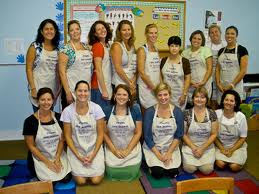 5 Categories of Support Staff
5 Categories of Support Staff
1. Learning support staff
Learning support staff work with teachers in the classroom, helping pupils progress with their learning. They include teaching assistants (TAs), higher level teaching assistants (HLTAs), foundation stage teaching assistants, nursery nurses, cover supervisors [school staff who are non teachers but still take charge of a whole class of students temporarily], and sports technician.
 2. Administrative staff
2. Administrative staff
Administrative staff provide essential back-up services for the whole school. They include Administative assistant, Examinations officer, Secretaries, and School business managers.
3. Welfare/pupil support
Pupil support staff are responsible for the welfare of pupils outside the classroom including during break, lunchtime and outside school hours. They include Learning mentors, Midday supervisors, Play workers, and Parenting support.
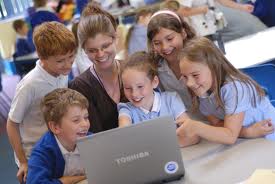 4. Specialist and technical staff
4. Specialist and technical staff
Specialist and technical staff are on hand in schools to provide valuable know-how and resources that support teaching and learning. They include Librarians and library staff, Information and Communication Technology, Design and Technology (D&T), Technicians, Food Technicians, and Science Technicians.
 5. Site staff
5. Site staff
Site staff play an important role in schools ensuring that the environment is clean, safe and tidy and that meals are available at lunchtime. They include Catering staff/kitchen assistants, Cleaning Staff, and Premises managers/caretakers.
STUDENTS AND PROGRESS REPORTS
 In commercial parlance, students in schools are considered the clients as well as the products. Schools are oftentimes measured by the kind of graduates they produce.
In commercial parlance, students in schools are considered the clients as well as the products. Schools are oftentimes measured by the kind of graduates they produce.
As a community commonly promotes the betterment of its members, a school ought to aim at looking after the progress or development of the students. One way to communicate the rate of progress of a particular student is through report card and progress report.
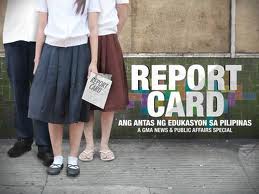 10 Basic Information about Report Card
10 Basic Information about Report Card
1. A report card communicates a student's performance. In most places, the report card is issued by the school to the student or the student's parents twice or four times yearly.
2. In England, secondary schools would traditionally issue a written report, often no more regularly than once a year. This is changing, however, with many schools now issuing reports similar to a grade report.
3. Due to their status as significant documents, many early grade reports were printed on cardboard, card-stock paper, or other heavy paper-based materials. Many formal education systems also standardize the dimensions of their grades reports to be as long and wide as large index cards. Because of these card-like qualities, grade reports have been historically called "report cards."
4. Although the dimensions, weight, and pliability of report cards change depending on their education systems, many institutions and districts now print grades reports/report cards on standard 8.5"x11" copy paper.
5. Grade 1-6 in Ontario, Canada use 3-page report card. The first half of page 1 gives student information and information about the marking procedures. The bottom 1/4 of the second page includes Learning skills on which the teacher comments on the learning skills and/or overall performance. Page 3 is for Parent Comments and Signatures and also for Students to plan goals for the future.

6. A typical report card uses a grading scale to determine the quality of a student's school work. In Ontario, Canada, kindergarten report cards use Below, Approaching, Meeting and Exceeding Provincial Standard for term 2 and 3. The report cards for Grade 1-6 use D-, D, D+, C-, C, C+, B-, B, B+, A-, A, and A+ as ratings.
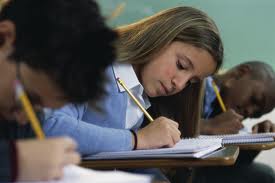 7. In many elementary schools in North America a "Check System" is used in the primary grades in place of letter grades. Teachers give a Check for at grade level, Check Plus for advanced, and Check Minus for behind grade level.
7. In many elementary schools in North America a "Check System" is used in the primary grades in place of letter grades. Teachers give a Check for at grade level, Check Plus for advanced, and Check Minus for behind grade level.
8. Check system is also used for informal, low-stakes grading in US colleges, particularly in the humanities, especially for short writing samples such as reaction papers or in-class writing, as an alternative to a numerical or letter grade. Here a check means "acceptable, expected level", check plus means "better than expected, good, outstanding", and check minus means "below expectations, unacceptable, bad". The system may also be supplemented by a "zero" for not done.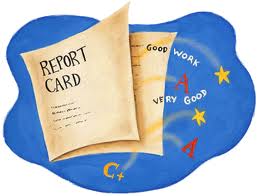

9. Some report cards also display the median for the subject/strand/course. The median is the percentage mark at which 50 per cent of the students in the subject/strand/course have a higher percentage mark and 50 per cent of the students have a lower percentage mark.
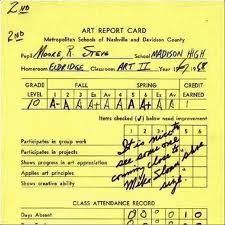 10. Report cards are now frequently issued in automated form by computers and may be mailed to parents and students. Traditional school report cards contained a section for teachers to record individual comments about the student's work and behaviour unlike some automated cards.
10. Report cards are now frequently issued in automated form by computers and may be mailed to parents and students. Traditional school report cards contained a section for teachers to record individual comments about the student's work and behaviour unlike some automated cards.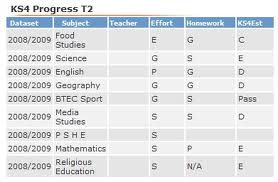 Progress reports
Progress reports
In the United States, progress reports may be issued to track a student's performance in between report cards. They are typically issued at the midpoint of a grading period, (for example: 4½ weeks into a nine-week grading period, or three weeks into a six-week grading period) and contain essentially the same information as the report card. These reports allow students and their parents to see if school performance is slipping and if intervention is required to bring up the grade.
SCHOOL CLIMATE
Importance
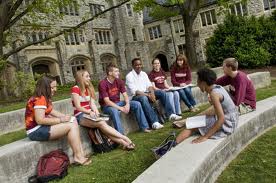 The so-called school climate shapes how we feel about being in school: feeling safe or unsafe; feeling connected to caring authorities or alone dreadfully; and feeling engaged in meaningful learning or not. Clearly, the atmosphere that a particular school displays significantly affects the learning and development of its students.
The so-called school climate shapes how we feel about being in school: feeling safe or unsafe; feeling connected to caring authorities or alone dreadfully; and feeling engaged in meaningful learning or not. Clearly, the atmosphere that a particular school displays significantly affects the learning and development of its students.
 The so-called school climate shapes how we feel about being in school: feeling safe or unsafe; feeling connected to caring authorities or alone dreadfully; and feeling engaged in meaningful learning or not. Clearly, the atmosphere that a particular school displays significantly affects the learning and development of its students.
The so-called school climate shapes how we feel about being in school: feeling safe or unsafe; feeling connected to caring authorities or alone dreadfully; and feeling engaged in meaningful learning or not. Clearly, the atmosphere that a particular school displays significantly affects the learning and development of its students.
Definition
School climate refers to the quality and character of school life. School climate is based on patterns of students', parents' and school personnel's experience of school life and reflects norms, goals, values, interpersonal relationships, teaching and learning practices, and organizational structures.
School climate refers to the quality and character of school life. School climate is based on patterns of students', parents' and school personnel's experience of school life and reflects norms, goals, values, interpersonal relationships, teaching and learning practices, and organizational structures.
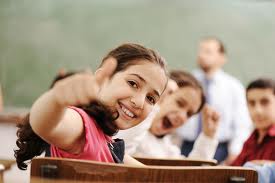 A positive school climate is associated with academic achievement, effective risk prevention efforts and positive youth development. It includes the following:
A positive school climate is associated with academic achievement, effective risk prevention efforts and positive youth development. It includes the following:-
Norms, values and expectations that support people feeling socially, emotionally and physically safe.
-
People are engaged and respected.
-
Students, families and educators work together to develop, live and contribute to a shared school vision.
-
Educators model and nurture attitudes that emphasize the benefits and satisfaction gained from learning.
-
Each person contributes to the operations of the school and the care of the physical environment.
The 12 Dimensions (and Indicators) of a Positive School Climate
*Students and staff play vital roles to achieve these various facets of a beneficial school climate
 A. Safety
A. Safety
1. Rules and Norms
There are clearly communicated rules about physical violence, verbal abuse, harassment, teasing, bullying, etc.; and clear and consistent enforcement and norms for adult intervention.
2. Sense of Physical Security
Students and adults feel safe from physical harm in the school.
3. Sense of Social-Emotional Security
People feel safe from verbal abuse, teasing, and exclusion.
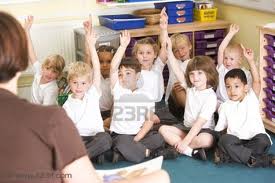 B. Teaching and Learning
B. Teaching and Learning
4. Support for Learning
There are supportive teaching practices, such as: encouragement and constructive feedback; varied opportunities to demonstrate knowledge and skills; support for risk-taking and independent thinking; atmosphere conducive to dialog and questioning; academic challenge; and individual attention.
5. Social and Civic Learning
There is support for the development of social and civic knowledge, skills, and dispositions including: effective listening, conflict resolution, self-reflection and emotional regulation, empathy, personal responsibility, and ethical decision making.
C. Interpersonal Relationships
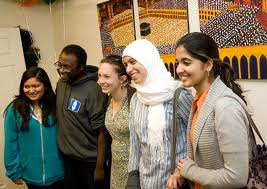 6. Respect for Diversity
6. Respect for Diversity
There is mutual respect for individual differences (e.g. gender, race, culture, religion, etc.) at all levels of the school—student-student; adult-student; adult-adult and overall norms for tolerance.
7. Social Support—Adults
There is a pattern of supportive and caring adult relationships for students, including high expectations for students’ success, willingness to listen to students and to get to know them as individuals, and personal concern for students’ problems.
8. Social Support—Students
There is a pattern of supportive peer relationships for students, including: friendships for socializing, for problems, for academic help, and for new students.
D. Environment (Institutional & Physical
9. School Connectedness/Engagement
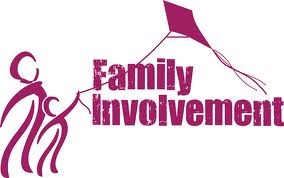 There is positive identification with the school and norms for broad participation in school life for students, staff, and families.
There is positive identification with the school and norms for broad participation in school life for students, staff, and families.
10. Physical Surroundings
There is cleanliness, order, and appeal of facilities and adequate resources and materials.
(For Staff Only)
11. Leadership
Administration creates and communicates a clear vision, and is accessible to and supportive of school staff and staff development.
12. Professional Relationships
There are positive attitudes and relationships among school staff that support effectively working and learning together.
CONCLUSION
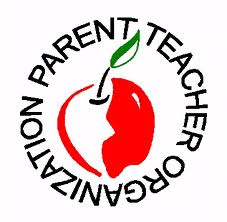 School managers, teachers, staff, students, parents and the rest of the people involved in learning institution should collaboratively work as a team to advocate the above-mentioned dimensions and indicators of a healthy school climate.
School managers, teachers, staff, students, parents and the rest of the people involved in learning institution should collaboratively work as a team to advocate the above-mentioned dimensions and indicators of a healthy school climate.
Teachers for instance, in striving to create a culture of excellence in school, should collectively search for ways to become more effective mentors, who value changing their own knowledge base and skills, and who seek change to accomplish improvement.
 As Peter Senge's Fifth Discipline (1990) promoted, a work environment must be one where employees engaged as teams, developing a shared vision to guide their work, operating collaboratively to produce a better product, and evaluating their output. Susan Rosenholtz (1989) pertinently described a workplace for teachers that encouraged collaboration, an environment in which teachers shared ideas and solutions to problems, and shared learning about educational practice. For as studies uniformly show, as teachers learned from each other and improved their practice, benefits to students increased.
As Peter Senge's Fifth Discipline (1990) promoted, a work environment must be one where employees engaged as teams, developing a shared vision to guide their work, operating collaboratively to produce a better product, and evaluating their output. Susan Rosenholtz (1989) pertinently described a workplace for teachers that encouraged collaboration, an environment in which teachers shared ideas and solutions to problems, and shared learning about educational practice. For as studies uniformly show, as teachers learned from each other and improved their practice, benefits to students increased. It is therefore the objective of any school to provide a workplace or environment where students and learning are the undeviating focus and the faculty and staff work collegially to achieve the desired results. This way, the school can be aptly called “professional learning community", "community of inquiry", and “community of inquirers and learners.”
It is therefore the objective of any school to provide a workplace or environment where students and learning are the undeviating focus and the faculty and staff work collegially to achieve the desired results. This way, the school can be aptly called “professional learning community", "community of inquiry", and “community of inquirers and learners.”
REFERENCES





Add new comment